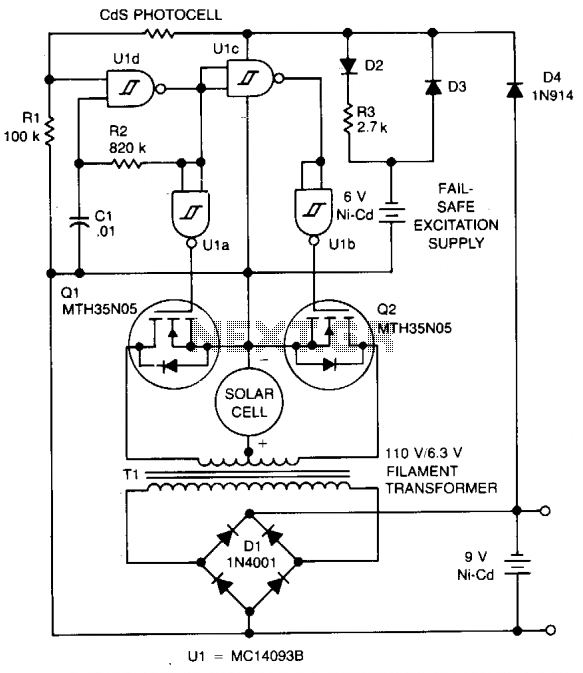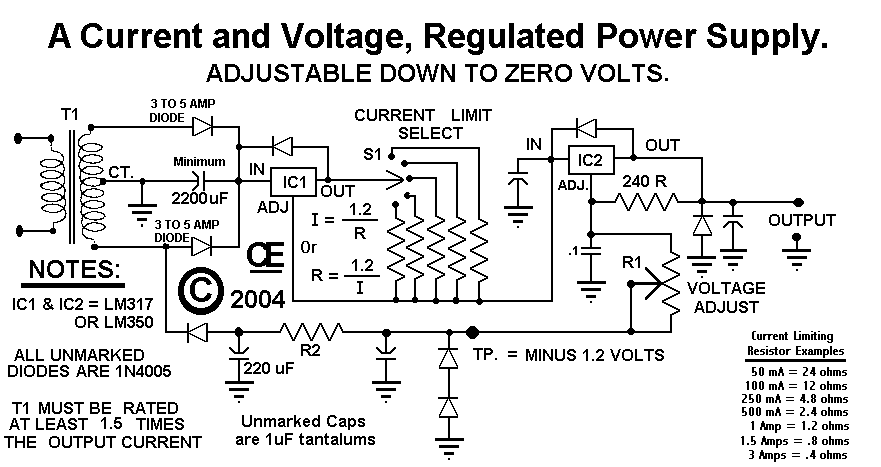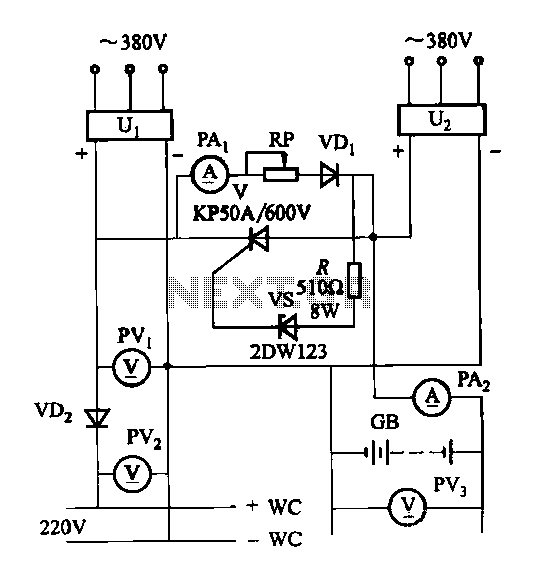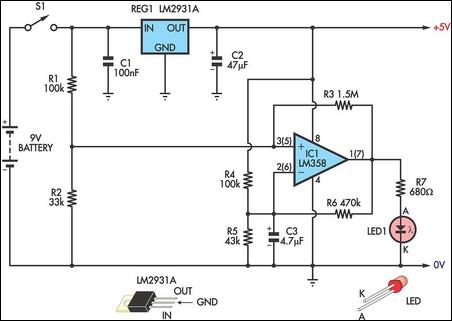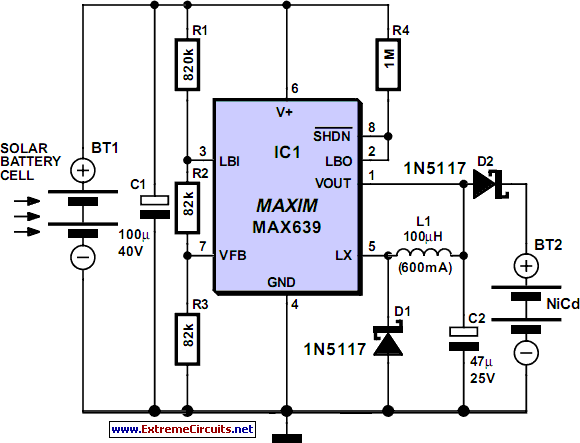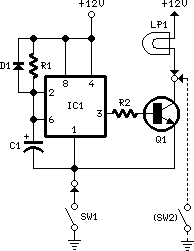
Battery simulator provides current limiting
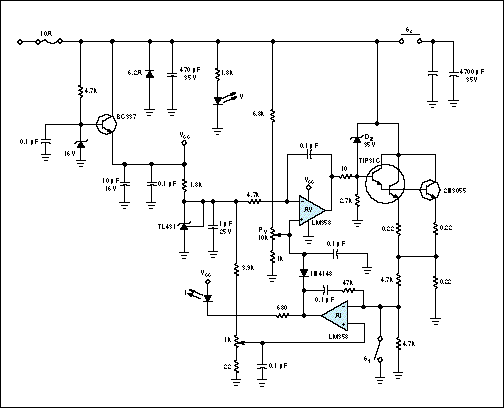
A constant-voltage active load can function as a battery during the charge cycle. The load voltage can be adjusted from 5 to 35V using potentiometer PV, simulating batteries with voltages ranging from 6 to 32V. In the testing of a battery charger, particularly during design or calibration, a current-limiting feature is advantageous; this feature can be activated by opening switch S1. An LED indicator illuminates when the current reaches its limit, signaling that the circuit has exited its constant-voltage operating mode. To replicate the dynamic behavior of a battery, multiple electrolytic capacitors can be connected. This configuration allows current pulses to flow bidirectionally between the load and the battery charger. However, a significant capacitive load may induce oscillations, complicating the provision of loop compensation for stable closed-loop operation. In such instances of instability, switch S2 can be used to disconnect the capacitors. If closed-loop compensation issues arise, it is advisable to attempt compensation without the use of capacitors.
A constant-voltage active load circuit is designed to simulate the behavior of a battery during the charging process, making it an essential tool for testing and calibrating battery chargers. The circuit utilizes a variable potentiometer (PV) to set the desired load voltage between 5V and 35V, allowing for the emulation of different battery voltages ranging from 6V to 32V. This versatility is crucial for engineers who need to assess the performance of battery chargers under various conditions.
The current-limiting feature is implemented through the use of switch S1, which when opened, activates the protection mechanism. This mechanism is vital for preventing excessive current that could damage the charger or the load. The accompanying LED indicator serves as a visual cue, alerting the user when the current limit is reached, thus indicating that the circuit has transitioned from its constant-voltage mode.
To accurately simulate the dynamic response of a battery, the circuit can incorporate multiple electrolytic capacitors. These capacitors allow for the bidirectional flow of current pulses, mimicking the charging and discharging behavior of real batteries. However, caution must be exercised as a large capacitive load can lead to oscillations, which may complicate the feedback loop necessary for stable operation. In scenarios where instability occurs, switch S2 can be employed to disconnect the capacitors, thereby mitigating the oscillatory behavior.
For situations where closed-loop compensation proves challenging, it is recommended to explore compensation strategies that do not rely on capacitors. This approach can help maintain stability in the circuit while still providing the necessary load characteristics for effective battery charger testing. Overall, the design of this constant-voltage active load circuit emphasizes flexibility, safety, and reliability, making it an indispensable tool in the field of battery charger development and testing.A constant-voltage active load can perform as a battery during the charge cycle. You can set the load voltage from 5 to 35V by using potentiometer PV and thus can simulate batteries ranging from 6 to 32V. In testing a battery charger (during design or for calibration purposes), a current-limiting function is a desirable feature; you e
nable this protection feature by opening S1. The LED lights if the current reaches the limit. This feature lets you know when the circuit goes out of its constant-voltage operating mode. To simulate the dynamic behavior of a battery, you can connect several electrolytic capacitors. With the addition of these capacitors, current pulses can flow bidirectionally between the load and the battery charger. In some cases, a large capacitive load could cause oscillations, making it difficult to provide loop compensation for stable closed-loop operation.
In case of such instability, switch S2 provides capacitor disconnection. If you encounter closed-loop compensation problems, try to compensate without using capacitors. (DI #2065) 🔗 External reference
A constant-voltage active load circuit is designed to simulate the behavior of a battery during the charging process, making it an essential tool for testing and calibrating battery chargers. The circuit utilizes a variable potentiometer (PV) to set the desired load voltage between 5V and 35V, allowing for the emulation of different battery voltages ranging from 6V to 32V. This versatility is crucial for engineers who need to assess the performance of battery chargers under various conditions.
The current-limiting feature is implemented through the use of switch S1, which when opened, activates the protection mechanism. This mechanism is vital for preventing excessive current that could damage the charger or the load. The accompanying LED indicator serves as a visual cue, alerting the user when the current limit is reached, thus indicating that the circuit has transitioned from its constant-voltage mode.
To accurately simulate the dynamic response of a battery, the circuit can incorporate multiple electrolytic capacitors. These capacitors allow for the bidirectional flow of current pulses, mimicking the charging and discharging behavior of real batteries. However, caution must be exercised as a large capacitive load can lead to oscillations, which may complicate the feedback loop necessary for stable operation. In scenarios where instability occurs, switch S2 can be employed to disconnect the capacitors, thereby mitigating the oscillatory behavior.
For situations where closed-loop compensation proves challenging, it is recommended to explore compensation strategies that do not rely on capacitors. This approach can help maintain stability in the circuit while still providing the necessary load characteristics for effective battery charger testing. Overall, the design of this constant-voltage active load circuit emphasizes flexibility, safety, and reliability, making it an indispensable tool in the field of battery charger development and testing.A constant-voltage active load can perform as a battery during the charge cycle. You can set the load voltage from 5 to 35V by using potentiometer PV and thus can simulate batteries ranging from 6 to 32V. In testing a battery charger (during design or for calibration purposes), a current-limiting function is a desirable feature; you e
nable this protection feature by opening S1. The LED lights if the current reaches the limit. This feature lets you know when the circuit goes out of its constant-voltage operating mode. To simulate the dynamic behavior of a battery, you can connect several electrolytic capacitors. With the addition of these capacitors, current pulses can flow bidirectionally between the load and the battery charger. In some cases, a large capacitive load could cause oscillations, making it difficult to provide loop compensation for stable closed-loop operation.
In case of such instability, switch S2 provides capacitor disconnection. If you encounter closed-loop compensation problems, try to compensate without using capacitors. (DI #2065) 🔗 External reference
